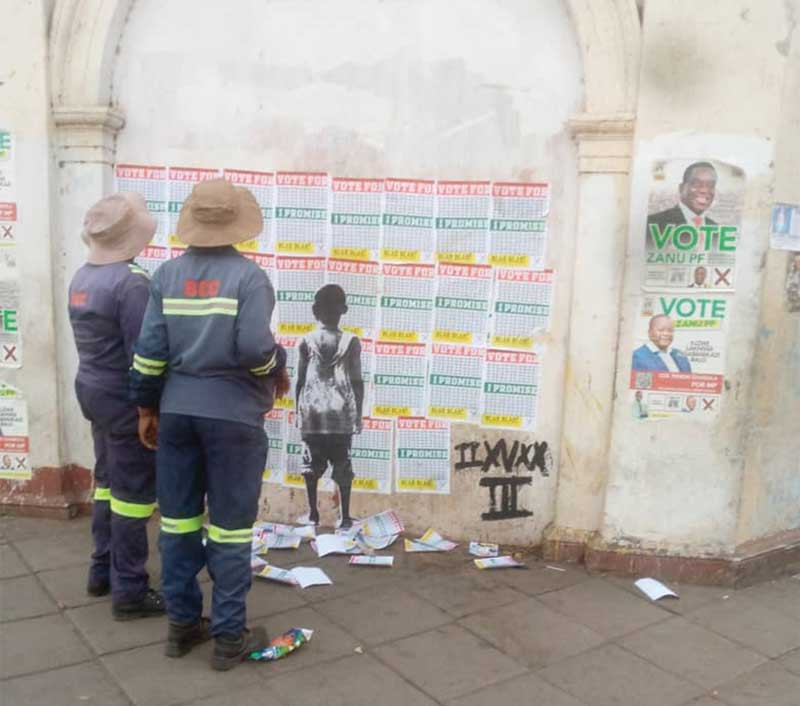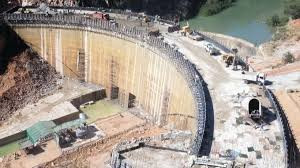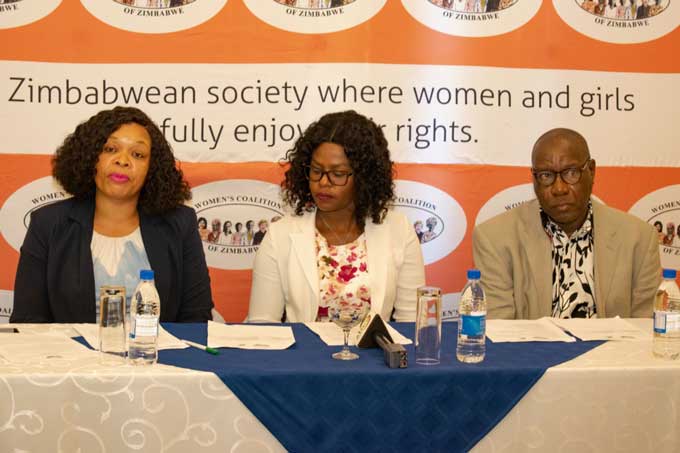
ON election day, Bulawayo woke up to a mural depicting how political parties and politicians have fed the electorate with empty promises.
The anonymous mural was painted on the toilet walls of Bulawayo City Council's hall along Fife Street and Eighth Avenue.
The artwork shows a child in torn clothes, looking at campaign posters.
The posters are inscribed 'I promise blah blah blah" which is generally nothing. The kid looks, rather listens to the empty promises fed by politicians and parties.
The poor child depicts a poor generation of voters, a generation which lives in an era of high inflation, crippled economy, high unemployment rate and gross corruption in government.
This is not the first time a politically charged mural was painted on the same wall.
The city council toilet walls have become a platforrm for visual artistes to express their thoughts and art.
In January last year, visual artiste Leeroy Spinx Brittain, popularly known as Bow, was at the centre of controversy after he painted a mural depicting King Lobengula and Mbuya Nehanda as lovers.
- ED heads for Marange
- ‘Zimbos dreading 2023 elections’
- Zim headed for a political dead heat in 2023
- Your Excellency, the buck stops with you
Keep Reading
The mural depicted King Lobengula carrying a heart-shaped balloon while embracing Mbuya Nehanda and inscribed, "Love is greater than Shona and Ndebele, Africans unite."
King Lobengula was the last Ndebele king. He ruled the Matabele Kingdom after the death of Mzilikazi in 1868, until the demise of the Kingdom in the mid-1890s.
Nehanda Charwe Nyakasikana, was a spirit medium of the Zezuru people. She was a medium of Mbuya Nehanda, a female Shona mhondoro (ancestral spirit). As one of the spiritual leaders of the Shona, she was one of the leaders of the revolt, the First Chimurenga, against the British South Africa Company’s colonisation of Zimbabwe led by Cecil John Rhodes in 1896-7.
Bow said his intentions of the art piece were to unite people and fight tribalism that is deep-rooted in the country using the two icons Lobengula and Nehanda.
“In Matabeleland people give so much respect and honour to King Lobengula and in Mashonaland region it’s Mbuya Nehanda and what the piece means is a Shona and a Ndebele can love each other,” Bow said.
“As you can see, King Lobengula is hugging Mbuya Nehanda with a balloon with a heart.
“It’s just the lightest way for people to understand that people can love and live with each other.
"As we speak there are so many descendants of these two great people building families together and loving each other though we still have the tribalism movements going on. It brings us down as a country. Love is beyond tribes, let’s love each other.”
Bow felt as a nation there was need to find each other and move on from issues that are dividing people.
“Look at Rwanda, they have moved on and they are building their country together post genocide era,” he said.
“We can also do the same as Zimbabweans. Even myself as a coloured I have faced the challenges in so many places, where there is a stereotyping of coloured people. All this stereotype and tribalism is what’s bringing us down as a nation.
“Let’s look beyond tribes and come together, all I’m trying to do with the mural is bring awareness to people that love is beyond tribes and love can cover any wound and differences.”
In less than 24 hours the city council staffers had erased the mural with Bulawayo mayor Solomon Mguni saying the painting was illegal.
A day after the mural was erased, Bulawayo woke up to graffiti on the same wall, inscribed, “Gukurahundi, we will not forget.” The graffiti text was in black with a splash of red paint insinuating bloodshed.
Gukurahundi resulted in the death of more than 20 000 people in Matabeleland and Midlands province, with many more displaced, mutilated and traumatised.
It was carried out by the North Korean trained Fifth brigade. Gukurahundi is derived from a Shona term which loosely translates to “the early rain which washes away the chaff before the spring rains”.
In 1999, the late former president Robert Mugabe who was behind the skirmishes sensationally said: “Gukurahundi was a moment of madness’ without telling who was mad between him (the perpetrator) and the victims”.










